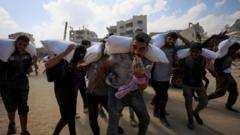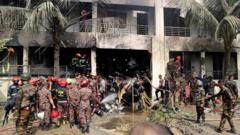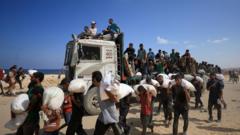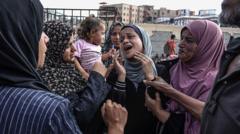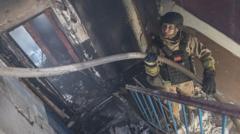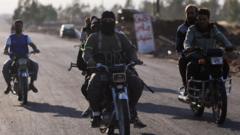Over the weekend, a pair of shootings drew attention to the dangers inherent in food distribution methods, revealing deep-rooted systemic issues.
Deadly Shootings Spotlight Aid Distribution Risks in Gaza

Deadly Shootings Spotlight Aid Distribution Risks in Gaza
Recent violence during aid distribution efforts in Gaza underscores the perils faced by civilians amidst ongoing conflict.
Over the past weekend, two tragic incidents in Gaza starkly illustrated the severe risks tied to the distribution of aid amidst ongoing conflict. On Saturday, Israeli soldiers opened fire on Palestinians near a food distribution location, and the following day, more shots were fired as civilians gathered near a United Nations convoy delivering much-needed supplies. Both events underscored the perilous situation faced by Palestinian civilians reliant on external assistance for survival.
The first incident involved civilians attempting to access food distributed through Israel-supported contractors in areas under Israeli control. The second incident, occurring one day later, featured similar tragedies related to U.N. aid efforts aimed at supporting those in Hamas-controlled territories. Proponents of the Israel-backed distribution system cited the U.N. incident to underscore its inadequacies. In contrast, supporters of the U.N. system pointed to the Israeli shooting on Saturday as evidence of the failures in Israel's approach.
Israeli officials contend that placing food distributions outside Hamas's reach is essential to prevent theft and ensure supplies reach those in need. However, critics claim that this strategy endangers vulnerable civilians, forcing them across military lines at great risk. Three critical factors further highlight the urgent challenges associated with both aid distribution methods.
In both instances over the weekend, the Israeli army resorted to live ammunition for crowd control rather than employing non-lethal alternatives. The backdrop of food scarcity, exacerbated by an 80-day blockade imposed by Israel earlier this year, has led civilian populations to confront the threat of violence, all while striving to avoid starvation.
The ongoing warfare, now entering its 22nd month, has left Gaza without a functional governance system. With Hamas unable to fulfill its role in providing social services and law enforcement across significant parts of the territory, the result has been a chaotic atmosphere. Despite the destruction of key Hamas leadership and infrastructure, Prime Minister Benjamin Netanyahu has opted against establishing a transitional governance system, either through military oversight or by empowering alternative Palestinian leadership.
"There’s a blame game and everyone is looking at the technical details and about how the aid is distributed," noted Shira Efron, from the Israel Policy Forum. "But the bigger issue is the lawlessness and the breakdown of governance." She emphasized the need to address the underlying question of Gaza’s future to pave a path toward resolution.
In response to critics, including dissenting voices within Israel, Netanyahu has reiterated that Hamas must first be eradicated before any discussions about postwar governance can proceed. However, many argue that a strategy for replacing Hamas is vital to achieving long-term stability in the region. Patrick Kingsley serves as the Jerusalem bureau chief for The Times, focusing on developments in Israel, Gaza, and the West Bank.


